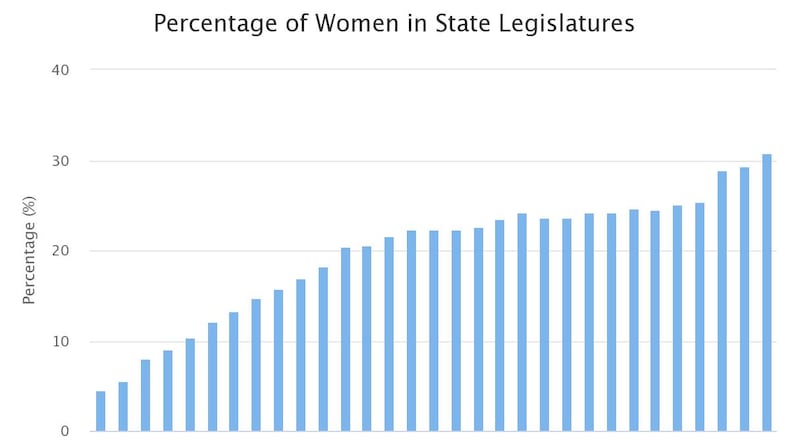Women comprise an estimated 51 percent of Ohio’s 11.7 million residents, according to the U.S. Census bureau.
Ohio House Minority Leader Emilia Sykes, D-Akron, said the number of women legislators may lag because women tend to be discouraged from running or not seen as belonging in power positions. However “both political parties are starting to realize when women run, women win,” said.
She said government works better the more women there are in public office.
“Women tend to work more collaborative and are more willing to find common ground. I’ve noticed that women legislators have been far more willing to work to get the work done without the credit,” she said. “It’s quite refreshing and I look forward to more women joining the ranks of elected leadership.”
Nationally, 30.6% of legislative seats are held by women, according to NCSL. This marks a historical record for female representation in state legislatures, NCSL found.
State numbers vary widely. In Nevada, 60.3% of the seats are held by women — the only state to crack the 50% parity threshold. Ohio’s neighbor, West Virginia, has the lowest percentage of women lawmakers with 11.9%.
The number of women in state legislative across the nation has gradually climbed from 4.5% in 1971 to 12.1% in 1981, 18.3% in 1991, 22.4% in 2001, 23.7% in 2011 and 30.8% in 2021, according to data kept by the Center for American Women and Politics at Rutgers University. Two-thirds of the female legislators nationwide are Democrats and 25.5% are women of color, according to the center.
“If you look across states, Democratic women are doing much better than Republican women. While women are about half of all Democratic state legislators, women are only about one-fifth of all Republican state legislators. Therefore, gender parity has been more elusive for Republican women,” said Kira Sanbonmatsu, political science professor at Rutgers and a senior scholar at the CAWP.
Women are often overlooked as potential candidates and while women are competitive fundraisers, donor support is more forthcoming for men, Sanbonmatsu said.
Data kept by the center on Ohio legislators shows 7.6% were women in 1981, 15.2% in 1991, 22% in 2001, 22.7% in 2011 and 31.1% in 2021.
Ohio has never elected a woman to a U.S. Senate seat or the governor’s office. One woman — Republican JoAnn Davidson — has held the Ohio House speaker post.
“Women legislators bring distinctive life experiences and perspectives to the policymaking process. The presence — or absence — of women also sends a symbolic message about the extent to which government is inclusive of the entire population,” said Sonbonmatsu.
About the Author


